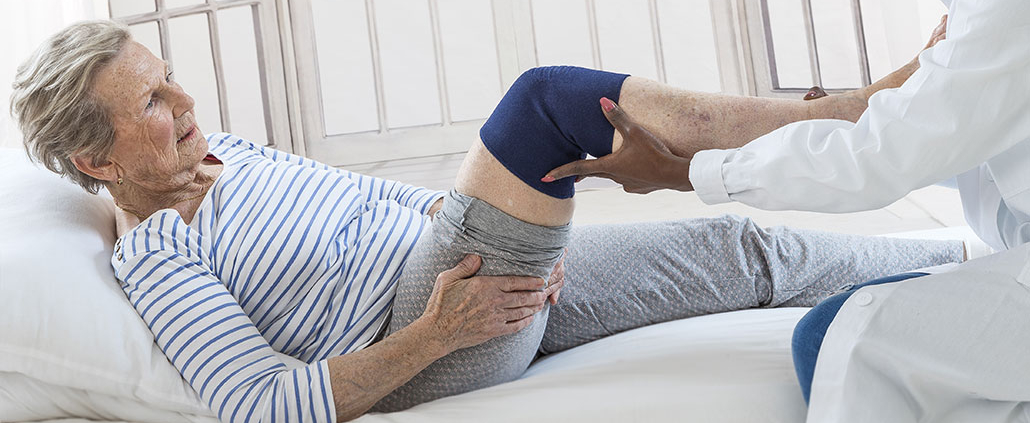Rehabilitation After Joint Replacement: A Roadmap to Optimal Recovery
Joint replacement surgery is a transformative step towards reclaiming mobility and alleviating pain for individuals facing degenerative joint conditions. However, the success of the surgery is intricately linked to the rehabilitation process that follows. Here we will discuss the crucial steps of rehabilitation after joint replacement, outlining a comprehensive roadmap designed to ensure optimal recovery and the restoration of a vibrant, pain-free life.
Understanding the Importance of Rehabilitation
Joint replacement surgeries, whether for hips, knees, or shoulders, require a meticulous approach to rehabilitation. The process is not only about healing the surgical site but also about restoring function, strength, and flexibility. A well-structured rehabilitation program is the key to unlocking the full potential of the joint replacement and returning to an active lifestyle.
Early Postoperative Phase:
1. Immediate Post-Surgery Care:
- In the initial days following the surgery, the focus is on pain management, wound care, and monitoring for potential complications. Physical therapists work closely with patients to initiate gentle exercises that encourage blood circulation and prevent stiffness.
2. Gradual Mobility Exercises:
- As pain subsides, mobility exercises are introduced to regain joint movement. These exercises include ankle pumps, knee bends, and gentle leg raises, depending on the joint replaced.
3. Assistive Devices:
- The use of assistive devices like crutches or walkers may be recommended to support early mobility while ensuring stability and reducing stress on the replaced joint.
Mid-Term Recovery Phase:
1. Strengthening Exercises:
- As the joint heals, a transition to more focused strengthening exercises occurs. Physical therapists design personalized programs to target muscle groups surrounding the joint, gradually rebuilding strength.
2. Range of Motion Enhancement:
- Progressive exercises are implemented to improve the joint’s range of motion. Flexibility exercises and stretches play a crucial role in preventing scar tissue formation and enhancing overall joint function.
3. Weight-Bearing Activities:
- Weight-bearing activities are gradually introduced to further enhance strength and stability. These activities are adapted based on the type of joint replacement surgery performed.
Late-Term Recovery Phase:
1. Functional Training:
- The emphasis shifts towards functional training, incorporating activities that mimic daily movements. This phase focuses on improving balance, coordination, and overall functional capacity.
2. Return to Activities:
- Patients work towards regaining the ability to perform daily activities without limitations. Specific exercises may be tailored for individual goals, such as climbing stairs, walking for extended periods, or engaging in recreational activities.
3. Ongoing Monitoring:
- Regular check-ins with the orthopedic surgeon and physical therapist ensure that progress is monitored, and the rehabilitation plan is adjusted as needed. This ongoing support is vital for addressing any challenges and optimizing recovery.
Patient Guidelines for Successful Rehabilitation:
1. Adherence to Exercise Programs:
- Consistent adherence to prescribed exercise programs is crucial for successful rehabilitation. Home exercises complement in-clinic sessions, contributing to continuous improvement.
2. Open Communication:
- Clear communication with the healthcare team about any concerns or challenges is essential. This ensures that the rehabilitation plan can be adjusted to meet the individual needs of the patient.
3. Patience and Persistence:
- Rehabilitation after joint replacement is a gradual process. Patience and persistence are key virtues as individuals navigate through the different phases, understanding that optimal recovery takes time.
A Renewed Lease on Mobility and Well-Being
Rehabilitation after joint replacement surgery is a carefully orchestrated journey towards renewed mobility and well-being. From the early postoperative phase to late-term recovery, each step is crucial for unlocking the full potential of the joint replacement. With a personalized roadmap, collaborative healthcare support, and the commitment of the patient, optimal recovery is not just a goal but a tangible reality. Embrace the rehabilitation process, and let it be the bridge to a life free from joint pain and filled with the joy of restored mobility.


